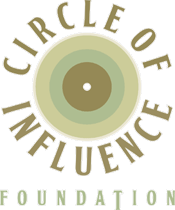Stress Reduction and Relaxation: Keys to Well-Being
by Suzanne E. Sky, L.Ac., MTOM
We all experience stress throughout our lives. While we often think about how great life would be if only we had no stress, this is actually a form of negative thinking, for it denies the reality that life is always filled with both joys and stress. What really makes the difference is how we choose to deal with these difficult times. When we choose to be fully present, with an open and compassionate awareness, we can respond to a given situation from a heart-full space. This is response-ability in its truest meaning. When we do not take this responsibility, we react to a situation based on our past. Our emotional reaction clouds the ability of the heart and spirit to respond and creativity is “rained out”.
There are many such challenging moments, days, weeks and even years in our lives. When someone is faced with a cancer diagnosis, for example, this may bring up many painful or difficult thoughts, emotions and certainly presents a most challenging time of life. Each person faces this situation in his or her own way. Being able to calm the mind and emotions, to face challenges with a positive attitude and peace in one’s heart is valuable medicine. No amount of herbs or vitamins can compensate for the lack of this. In fact, negative thoughts and emotions drain the system of our precious essence and energy, depriving our immune, endocrine and nervous systems of the energy needed for the very healing we seek.
By the same token, when we are tired and our energy is low, we are more easily overwhelmed by difficult emotions and the mind is not able to rest in quiet as easily. Here is where a good program of appropriate herbs, nutrition and natural compounds can help build up a person’s energy, allowing them to deal more graciously and skillfully with a rough situation. The analogy I think of is when we’re out in the ocean and feeling tired, it can be a great effort just to stay afloat in the waves and the littlest waves, coming one after the other, can be overwhelming. If we feel energetic and positive, we are able to swim and perhaps even have fun with the waves, but certainly we will be able to navigate them.
Franz Alexander, world pioneer in psychosomatic medicine found that mental/emotional stress interacted with the hypothalamic/limbic areas of the brain, which in turn influences the entire endocrine system via the pituitary and thyroid. This effects the modulation of the nervous, endocrine and immune systems. When we are peaceful, calm and relaxed inwardly we are able to deal with stress more graciously and endow ourselves with a positive influence on these bodily systems.
I encourage everyone, whether facing a serious health challenge or feeling healthy, to embrace a program of regular stress reduction and relaxation, with time allowed daily to simply be quiet and still. Peace comes from this place of quiet, where we can hear the still, small voice of the Divine, that uplifts us and gives us life and healing. The effects are cumulative, so a daily practice will bear fruit over time. This paper discusses a number of areas, based on my background in Taoism, Buddhism, Chinese Medicine and Christian mysticism. Of course, each person has their own inclination and practices they will be drawn to. I offer you this paper in hope to inspire you and give you a starting place to find your own path.
STRESS REDUCTION & RELAXATION
In Chinese medicine, emotions and lifestyle are very important, both as diagnostic tools and in treatment considerations. Our thoughts, emotions and lifestyle can directly cause, promote or influence physical illness or imbalance. When we are diagnosed with a difficult disease, such as cancer or chronic illness, it is necessary to examine the very foundations of our lives, to see what must be changed. Thoughts and emotions combine to form powerful attitudes that shape the way we live our lives. Stress, negative thoughts and emotions, poor lifestyle choices and habits all deplete our energy systems, contributing to weakened immune response, low energy, chronic complaints and other health problems. We will have varying degrees of control over the amount or kinds of stress in our lives, but we can always make changes in our response to stress.
Receiving a difficult diagnosis often triggers negative emotional states such as fear, anxiety, and worry, which is compounded by a stimulation of the thought process, as the information and options for treatment and decisions that need to be made are sorted out. Some people are able to rise above these difficult emotional and mental states, to face their situation with equanimity, grounded in the knowing of their very heart and being. This is an ideal situation, because the negative thoughts and emotions deplete us, robbing us of the very energy and outlook necessary to address the situation and decisions that must be made. During all stages of dealing with cancer or chronic illness, from diagnosis to recovery after treatment, maintaining a positive outlook is essential for well-being and healing at all levels.
Unlike animals, as conscious, spiritual beings, we do have a choice and an ability to take charge of our thoughts and emotions. Many spiritual and ancient medical traditions teach practical methods and tools to help in this process. A listing of books that are a good starting place, is at the end of this article. Buddhism, Taoism, Eastern Christianity, Chinese medicine, Ayurvedic medicine are just some of the traditions that are helpful. Meditation, prayer, active visualization, Qi Gong, Yoga, Flower Essences, herbal medicine and acupuncture are some of the most invaluable gifts that can be incorporated into one’s daily lifestyle. Other modalities can be helpful as well. By sowing the seeds of regular practice, you will reap the fruits of positive results.
RELAXATION AND THE HEALING RESPONSE
Meditation and prayer in particular are very helpful to calm and still the mind, calm and balance the nervous system, In Christian mystic tradition, meditation and prayer are two sides of a coin. Christ’s injunctions to his disciples was to “watch and pray”. During meditation we simply watch: observing the breath and observing the thoughts, allowing them to pass by like clouds in the sky. As the mind calms and becomes free of thoughts, we experience quiet in our heart and being. Now we are able to truly pray; to commune with our Creator.
Meditation and prayer activate the body’s natural healing ability. When we are relaxed, our body switches from the sympathetic (fight or flight) system, to the para-sympathetic nervous system, where healing, rest, relaxation and repair take place in the body. When the body is in the sympathetic nervous system mode, this is the stress response, where stress hormones are released into the body. Energy, blood and nerve supplies to digestive functions are shut down as these are directed to the muculo-skeletal system, readying the body literally for fight or flight.
Therefore, it’s easy to see that when we’re in the stress mode, our digestive system will not be working well and so we will not have good assimilation of nutrients. In Chinese medicine, the digestive system is a central area that requires care. Assimilation of nutrients is considered to be only one function of the digestive system. Even more important is the transformation of food and air into Qi, the life force that makes all physiological and biochemical processes possible. There are many forms of Qi, each with it’s own unique role and function in the body. When digestion is not working well, lack of nutrients and Qi lead to depletion of our life force, immune function, biochemical activity and healing ability. Since chemotherapy and even radiation in and of themselves can tend to weaken the digestive system, it is essential that a person do everything they can to support this function. Herbs can help a good deal. It is also beneficial to practice the development of positive emotional and mental states and promote the relaxation response, so that you are primarily living in the parasympathetic nervous system, healing mode.
BASIC VIPASSANA OR MINDFULNESS MEDITATION
Sit quietly in a comfortable position, either sitting on a meditation cushion or sitting on a couch, with your feet flat on the ground and your back supported so it is straight. Rest your hands in your lap. If you like, rest one hand on top of the other, palms up, with the thumb of the lower hand resting in the palm of the hand on top. This is a relaxing mudra that also supports the main central energy flow through the center line of the body.
Gently close your eyes.
Exhale, releasing all tension. Your mouth should be closed, unless this is not possible for some reason.
Breathe gently through your nose. Never force your breath. Simply observe your breath.
Bring your attention to your lower belly (below your navel), observing the rising and falling of your belly with each breath. Your belly will be expanding as you inhale and contracting gently as you exhale. Don’t force your breath, simply and gently bring your attention to the movement of your belly with each breath.
In Vipassana meditation, the thoughts are likened to clouds passing in the sky. Thoughts will naturally arise but do not engage in your thoughts. Let them pass by, like clouds in the sky. Bring your attention back to the movement of your belly with each breath.
Even if you can do this for 10 to 20 minutes a day, you will find your mind becoming quiet and still over a period of time. If you sometimes find many thoughts coming up as you sit down to meditate, this is natural. Don’t fret or lose heart, just keep sitting, bringing your attention to your belly with each gentle breath. You will reap benefits from this daily practice.
In many cities and towns there are people who practice Vipassana meditation and host weekly meditation sittings at their house. This can be a very instructive, helpful and supportive. Spirit Rock Meditation Center is a big center in Marin County, California that hosts many classes and retreats. Insight Meditation Center is a main center located in Massachusetts. You can find these easily on the internet.
Within the Vipassana tradition, there are other forms of meditation. Metta, or loving kindness meditation is a specific practice that enlivens the heart. Karuna or compassion is another practice. They also have specific practices that have been helpful for those dealing with chronic pain.
LOVING KINDNESS PROMOTES HEALING & WELL-BEING
Recent research in the field of neuroscience reports that the very act of caring for another persons well-being in itself creates greater well-being in ourselves. Neuroscientists at the University of Wisconsin in Madison studied several people who were long-term, advanced Buddhist mediators. Discernable brain pattern changes were documented as the result of several distinctly different meditative states. One of the biggest shifts was seen during meditation on compassion for all beings, a basic Buddhist meditative practice. During this practice, our hearts soften and we develop the qualities of compassion and loving kindness for both ourselves and others. We can embrace all of life, including its more difficult challenges with this attitude of an open heart.
The Dalai Lama, religious leader of Tibet, has made the observation that when we meditate on compassion and loving-kindness for all beings, we ourselves are the immediate beneficiaries. How much more so then, when we extend loving kindness and compassion to all those with whom we come in contact throughout our day? A smile to the cashier at the grocery store, a kind word to the person on the other end of the phone, sending a note of thanks to someone who was kind and helpful are simple ways we can share a loving heart. As we extend loving kindness and compassion for each person we come in contact with, our heart softens, our emotional horizons expand, our brain patterns change and in turn, these all have a positive benefit on our health. (Shambala Sun, March 2003; The Lama in the Lab by Daniel Goleman, p 64-72)
HEART RELAXATION
Here’s a simple exercise. You can practice this during a quiet time, a meditation, while laying in bed before falling asleep, and even throughout your busy day.
The natural tendency in pain or difficulty, is for the heart to contract. We can expand this through our awareness and breath. Take a few deep, gentle breaths, feeling the rise and fall of your lower belly until you feel quiet and still. Now, bring your attention to your heart. Wherever you feel a knot, constriction or contraction, breathe gently into that, feeling the area expand with each breath. With each breath, experience the relaxation that the expansion brings. Give thanks for the opportunity to grow through the challenges being offered and allow yourself to become aware of the new opportunities and attitudes that are now open to you through the expansiveness and spaciousness of your being fully in your heart.
RELAXING MEDITATION TO HELP SLEEP
Lay in bed in a comfortable position.
If it’s comfortable to do so, let the palm of your hand rest gently on your lower belly, with your thumb laying over your navel.
Exhale, letting go of all tension. Allow your mind to become still and quiet.
Simply bring your attention to the rising and falling of your lower belly with each breath. Do not force your breath, simply become aware of it, observing the rising and falling of your lower belly as you breathe.
Your thoughts are just like clouds passing in the sky. As your thoughts come up, simply let them go and bring your attention back to your breath and the rising and falling of your belly.
In Chinese medicine, this area of the lower belly is known as the Dan Tien, where our energy rests and is stored. All movements in Qi Gong and Tai Qi come from the Dan Tien, which is a major energy center. They teach us that the head is meant to be cool and the belly warm. When we get caught up in thinking and daily stress, our heads become warm and the belly cool. With tension, our breathing becomes shallow instead of the deep belly breathing that is vital for our well-being. As you lay comfortably in bed, practicing this simple observation of the breath, it encourages relaxation, allows tensions to release and calms our mind to allow a deep sleep. Practice this nightly to experience cumulative effects over time.
THE POWER OF CHOICE
Our thoughts and words have a great impact on our well-being. We don’t have much choice over whether we get cancer or not, along with many other things in life. But we do have a choice when it comes to our thoughts, our feelings and how we express ourselves in the world. Sharon Salzberg is a well-known Vipassana meditation teacher and author of the book, Loving-Kindness. She tells of a story of when she was living in Burma studying and practicing meditation daily. At one point, Sharon told her teacher how she was filled with negative thoughts about things she had done throughout her life. These thoughts were plaguing her and causing her emotional distress. Her teacher’s response was interesting. He asked her if she was then finally seeing the truth about herself.
She thought about this for several moments and replied, “No.”
Her teacher simply told her, “Then stop thinking these thoughts.”
That is a choice and decision only we can make, each of us for ourselves. Will we hold onto, grasp and coddle our negative thoughts and emotions, letting them run rampant over us like wild horses or spoiled, raucous children? Or will we choose to let them go and take the steps to consciously develop loving, positive thoughts and emotional outlook, choosing to share this loving kindness of our hearts with both others and ourselves.
SIMPLE AFFIRMATIONS
Affirmations are not intended as a form of denial. Closing our eyes and chanting “It is a sunny, dry day” while it is pouring rain is not going to change the weather. But if we can open our eyes and change our attitude about the rain, learning to accept it and find the proverbial “silver lining”, then we cultivate a sunny day inside our hearts and being. This radiates from within and creates a sunny day even when it’s raining. We can use affirmations to help us change our attitudes, draw upon deeper resources and cultivate hope in our being.
An attitude is simply a thought that is charged with an emotion. By directing our thoughts in a positive manner, we can help dissolve old, habitual, negatively charged attitudes. Turning our gaze above our everyday clouds of fear, anger, and resentment we begin to see the sunrays of hope, healing and love. As these qualities fill our heart, we are able to move beyond our selves allowing the sunshine to overflow from our being to all we meet. When you are on a healing path, it is especially important to dispel these dark clouds. Affirmations can be like sowing seeds. You need to prepare the soil of your heart for the seeds to grow, by cultivating forgiveness, trust, hope, and a quiet, loving heart.
Affirmations are best kept as a simple sentence. You can write them on an index card. Say it as a positive statement or as a prayer throughout the week. You can find simple phrases from inspirational books, the Bible or other resources you may have. You can also write your own. Here are some samples:
• I recharge my body, mind and spirit with energizing, positive words, thoughts and feelings.
• Peace calms my soul as I trust God’s wisdom to guide me.
• As I trust in the goodness of God and in God’s will of abundance for me, I am able to make wise decisions based not on fear but on trust and love.
• I am renewed by the gentle, healing love of God within me.
• Every cell of my being vibrates with the renewing life of God. I am healed and renewed.
• “Heal me, O Lord and I shall be healed; save me and I shall be saved: for you are my praise.” Jeremiah 17:14
YOUR SPECIAL PLACE
Some people find it helpful to make a special room or corner of their house, where they meditate, pray, paint or journal. Express your creativity here and make this spot special and comfortable to you.
You may want to write out inspirational quotes and put them in various places around your house; on your mirror, your refrigerator or by your desk. Stop and read them throughout the day. Words are food for our being.
Sometimes, a simple change can help transform your work or home environment. One woman I spoke with had two health challenged children who she took care of full-time and she had to also keep up a large amount of correspondence related to their situation, among many other responsibilities. Her days were very stressful plus she had a serious health challenge. She said she would absolutely have no time for yoga, mediation or any other activity, nor did she have room. I asked her if she would like the sound of a little waterfall somewhere by her desk, because the sound of water in the background can be gently relaxing, a reminder of something else. She really loved this idea. As she was telling me how it would fit in the corner of her room, she went on to say she could actually use that corner of the room and maybe do some yoga with her kids, So, if the idea of taking time to incorporate a new routine into your life seems overwhelming, start with something simple. Follow your inspiration and creativity.
BREATHING
Mary Burmeister, the teacher who brought the Japanese healing art of Jin Shin Jyutsu to America, always reminds us that wherever we are we have two of our most wonderful healing tools: our hands and our breath. In China, medical practitioners were expected to have deep, regular healthy breathing and healthy pulses so that they could impart this vital force to their clients. It’s sort of like setting your clock to the standard.
Our breathing is meant to be deep, with the belly and diaphragm gently expanding and contracting with each breath. This oxygenates our system on the inhale. By providing a good, deep exhale we push out all the old, stale air from our lungs, facilitating the exchange of gases that takes place in the lungs. As the diaphragm expands and contracts it helps to pump blood and lymph through the liver, helping to prevent the stagnation the liver is so prone to. The liver processes an enormous amount of blood and lymph and stores a good deal of blood throughout the day so this is an important function.
BREATHING, STRESS & RELAXATION
Our breathing both reflects the nervous system state we are in and can change it. What we are referring to here is the two branches of the nervous system known as the sympathetic and parasympathetic nervous system. Most people are aware that when we are stressed out, angry or very tired, our breathing becomes very shallow and often irregular as well. The sympathetic nervous system is activated during stress, trauma, perceived threat to our well-being and negative emotional states such as anger, worry and anxiety. In this mode, stress hormones are released and specific physiological responses occur. Blood is shunted away from the digestive system and into the musculo-skeletal system, preparing the body to flee or to fight. Thus, this is known as the fight-or-flight system. With prolonged stress, over time, the adrenals become depleted and a person will suffer fatigue and other symptoms of ill-health. Many people today are living in this state, living on adrenalin and in the fight-or-flight mode, with their true energy systems depleted, thus leaving them prone to develop all kinds of diseases and chronic complaints. It is not possible for healing and repair to take place while the nervous system is in this state, because the body is in a state of red alert, ready to face any emergency. In Chinese medical terms, this is a Yang state of activity.
In the West, we tend to forget the importance of the Yin state of rest; of simply being as compared to always doing. This is almost a foreign concept. People feel they must constantly be doing and accomplishing. The switch is always ON; full speed ahead. The parasympathetic nervous system mode is where we are meant to live our lives. This is not a Yin, passive state but a balanced state where we live from inner peace and equanimity. In this state good digestion occurs and the body does its healing, repair, renewal and can focus on everyday housekeeping and maintenance the body requires. I think of one of those peaceful villages in the country, in the Chinese movies, where the villagers have a quiet life, raising their rice, meditating, accomplishing their work and tending each other and their community. This quiet life goes on for decades. Suddenly, like a bad wind out of nowhere, come the evil marauders and the whole town is yanked out of it’s peaceful life into full war mode. During this time no one is tending the rice fields, cleaning their homes and enjoying everyday activities. Everything is on hold until the marauders can be routed out. Then life can return to its rhythmic balance of peacetime activity.
So you can see how important it is that we spend the majority of our lives in this state of equanimity, in the parasympathetic mode, where the body, mind and sprit can work in harmony so we can accomplish our work in the world. Part of the secret of this is to bring our awareness to the present, not being pulled backwards in reactivity to the past or falling forwards by expectations of the future. Being fully present in the Presence keeps us centered in this balanced mode, where Yin and Yang are actually in balance and harmony. Regular meditation, Qi Gong and other practices can help us to realize this state.
Yoga also offers many breathing exercises and techniques. I would suggest that during treatments such as chemotherapy and radiation, one would want to avoid practices such as the Breath of Fire, which increases the fire and heat in the system, since these treatments already are heat-producing. It would be more fruitful during this time and times of stress to practice more relaxing breathing methods, perhaps combined with healing mudras. An experienced teacher would be best consulted in an individual session. A great book is The Tao of Breathing, listed in the book section below. I highly recommend it.
DAILY AWARENESS OF OUR BREATH
On a daily basis, the most simple practice is that of simply bringing ones awareness to the breath, over and over, in many moments throughout the day. There is no need to force the breath or train it in any way. Make it your practice to stop at any moment in the day and simply notice your breath. It has been found, that in this simple noticing, the breath will naturally deepen. When the breath deepens so that the belly and diaphragm expand with each breath, this naturally switches us from the sympathetic mode (expressed in shallow breathing) right into the parasympathetic mode.
If you find yourself in an emotionally charged situation or highly stressful moment, simply remember to bring your awareness to your breath. In the awareness of your breath you find your center again and you are there.
YOGIC ALTERNATE NOSTRIL BREATHING
Sit comfortably. Cover your left nostril with your thumb as you slowly and gently inhale through the right nostril. Hold for about one second as your release your thumb and cover the right nostril with your index or ring finger. Exhale through your left nostril, slowly, gently and evenly. Exhale from deep down in your belly. Then, inhale slowly and evenly through your left nostril and repeat the cycle. Start by doing the alternate nostril breathing for a few minutes, to your comfort level. Let your mind be quiet, bring your awareness to your breath and let all thoughts pass by for now. Alternate nostril breathing is said to help calm, balance and tonify the nervous system.
Actions
Informations
Leave a comment


 |
 |
 |
 |
 |
 |





























Recent Comments